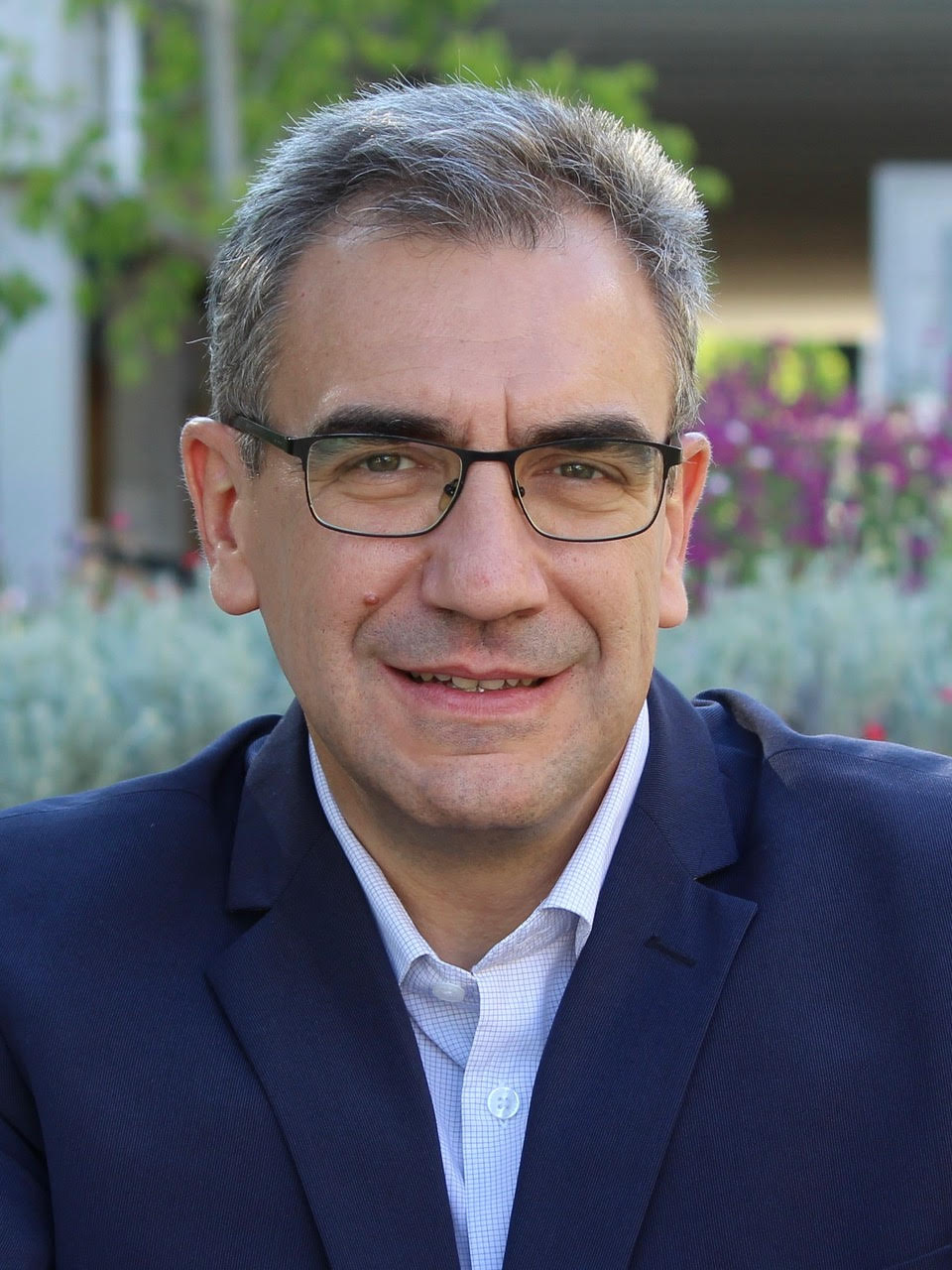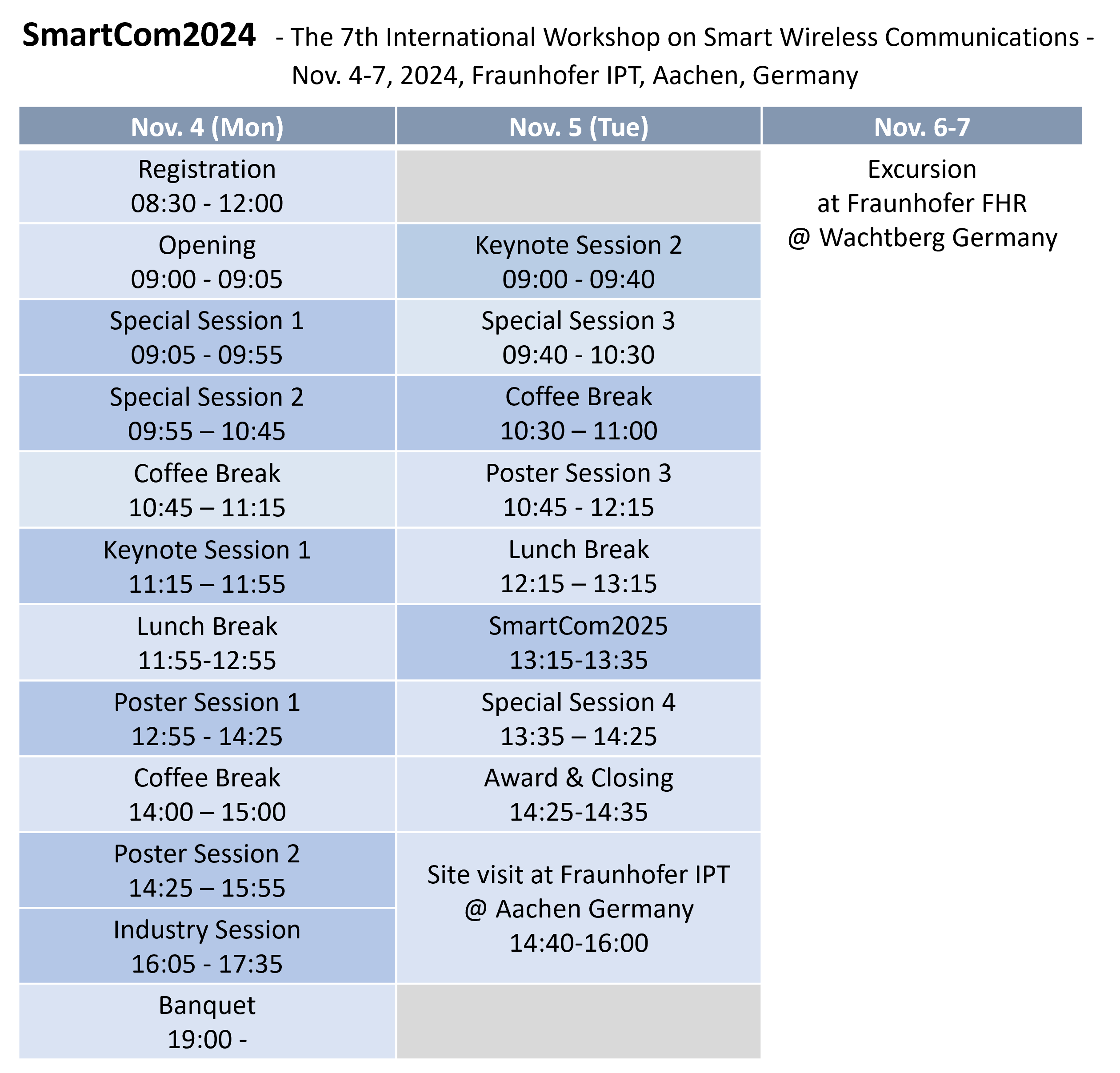KEYNOTE SESSIONS
Time: Nov. 4 (Mon) 11:15-11:55 (Keynote Session 1)
Title: Wireless Communications for Bridging Societies and People
Speaker: Dr. Takeshi Matsumura (NICT)

Biography:
Takeshi Matsumura received the M.S. degree in Electronic Engineering in 1998 and Ph.D. in Nano-mechanics Engineering in 2010 from Tohoku University. During 1998-2007, he had been engaged in the R&D of wireless communications devices in some companies. In April 2007, he joined National Institute of Information and Communications Technology (NICT) as a researcher in the Smart Wireless Laboratory and engaged in the white-space communication systems and 5th generation mobile communication systems. Since April 2016, he has been an associated professor at Graduate School of Informatics, Kyoto University. In April 2019, he returned to NICT, and from April 2021, he is a Director of the Smart Wireless Laboratory. His research interests include beyond 5G mobile communication systems, enhancement of 5G / Local 5G systems, wireless emulation technologies, NTN communication systems, and wireless communication in extreme environments Dr. Matsumura is a member of IEICE and IEEE.
Abstract:
This presentation focuses on the communication technologies that bridge societies and people to realize a diverse society. First, for connecting remote societies, multi-layer networks using non-terrestrial communications and autonomous flight of multiple drones for advanced air mobility are introduced. In particular, our efforts in demonstration experiments assuming various use cases and environments toward social implementation are introduced with regard to drone communications such as autonomous swarm flight and collision avoidance technologies using wireless communications. Next, research and development toward the realization of cybernetic avatar (CA) life, which is conducted by Moonshot Goal 1 project in Japan. A CA is a broad concept that includes not only substitute robots and 3D images, but also ICT and robotics technologies that expand human physical, cognitive, and perceptual abilities, and aims to free people from the constraints of the body, brain, space, and time so that everyone can freely participate in social activities. Here, highly reliable communication technology is essential for many people to contribute to society through a variety of CAs, and our efforts to ensure the reliability of remote operation are introduced.
Time: Nov. 5 (Tue) 09:00-09:40 (Keynote Session 2)
Title: A Perspective on Localization and Sensing using Key Technologies for 5G and Beyond
Speaker: Prof. Gonzalo Seco-Granados (UAB)

Biography:
Gonzalo Seco-Granados received the PhD degree in electrical engineering from the Universitat Politecnica de Catalunya, Spain, in 2000, and the MBA degree from the IESE Business School, Spain, in 2002. From 2002 to 2005, he was technical staff of the European Space Agency, The Netherlands, where he was involved in the design of the Galileo system and receivers. In 2015, 2019 and 2022, he was a Fulbright Visiting Scholar at the University of California, Irvine, CA, USA. He is currently a Professor with the Department of Telecommunication Engineering, Universitat Autonoma de Barcelona, where he was Vice Dean of the Engineering School, from 2011 to 2019. His research interests include localization based on GNSS and cellular systems. In the case of cellular systems, he contributed to the seminal works on "5G positioning". In the area of GNSS, he has developed techniques to increase the robustness against of interference, multipath and spoofing attacks, and to improve energy efficiency of GNSS receivers. He is co-founder of Loctio, a start-up providing low-energy positioning solutions for IoT. He is an IEEE Fellow. He serves as a member of the EURASIP Signal Processing for Multisensor Systems Technical Committee since 2022. Since 2019, he is the President of the Spanish Chapter of the IEEE Aerospace and Electronic Systems Society.
Abstract:
Mm-wave and massive MIMO technologies are some of the elements that have enabled the improvement of the communication capacity and reliability, and the reduction of the latency in 5G systems. These technologies have also made possible the advent of new positioning solutions characterized by very high accuracy, provision of orientation information, and inclusion of sensing capabilities, with reduced network-side infrastructure. The term “5G Localization” was coined to encompass this class of solutions, which have already impacted the standardization process. Elements considered in the ongoing research towards 6G systems, such as reconfigurable intelligent surfaces (RIS), are also showing large potential for localization, as they extend the position availability to problems that were previously unfeasible. In the first part of the talk, we will analyze some specificities of 5G localization beyond legacy cellular localization solutions, such as single base-station and carrier-phase positioning, and 6D problems. The second part of the talk will address how the presence of different types of RIS (passive, hybrid, STAR, etc.), and radio stripes can be exploited for localization and sensing when they operate in the near and far fields.



